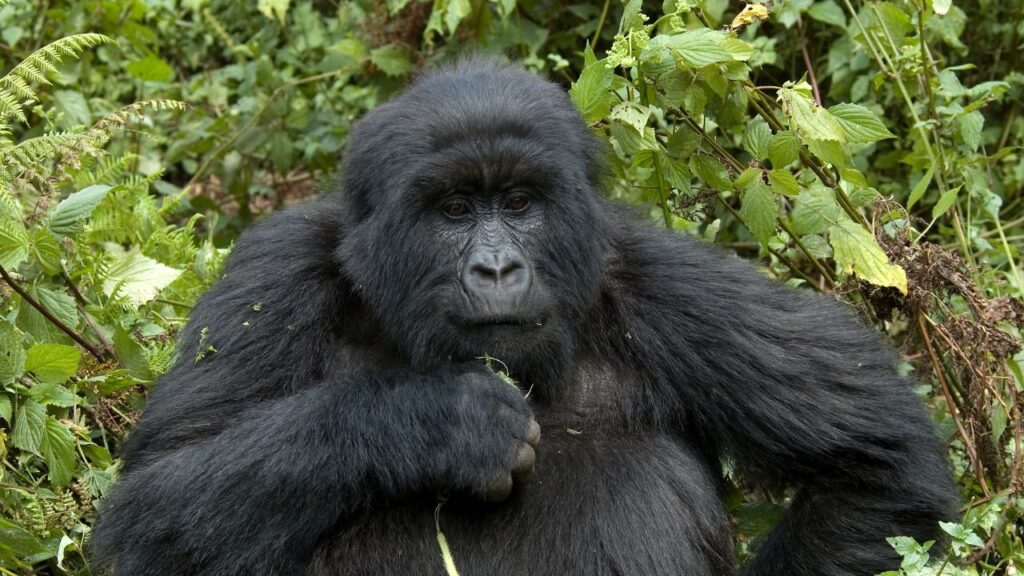Deep within the heart of Africa, amidst the verdant rainforests that drape the slopes of the Virunga Mountains, lies an adventure of a lifetime—the chance to trek through the natural habitat of Rwanda’s mountain gorillas. This journey not only offers a rare glimpse into the world of one of the planet’s most majestic creatures but also plays a critical role in their conservation. In this blog, we will explore the allure of this unique trek, the efforts made to protect these great apes, and the profound impact this experience has on visitors.
Table of Contents
The Allure of the Virunga Mountains
The Virunga Mountains, a chain of volcanoes spanning Rwanda, Uganda, and the Democratic Republic of Congo, are home to the world’s remaining mountain gorillas. In Rwanda, these mountains are primarily encompassed within the Volcanoes National Park, a mere two-hour drive from the capital city of Kigali. This proximity makes the park a key destination for those looking to experience wildlife in its most pristine form.

The park itself is a mosaic of bamboo forests, grasslands, swamps, and heath, with the rugged volcanoes providing a dramatic backdrop. The biodiversity here is staggering, but the true stars are the mountain gorillas, gentle giants who have found a sanctuary within this varied landscape.
Preparing for the Trek
Trekking to see the gorillas is no ordinary hike; it requires preparation and respect for the natural environment. Visitors must be in good physical condition as the trek can vary from 1 to 8 hours through challenging terrain at high altitudes. The weather here is unpredictable, often changing from intense sunshine to torrential rain within a matter of hours, so appropriate clothing is a must.
Before setting out, trekkers gather for a briefing with park rangers who explain the guidelines for interacting with gorillas. These rules are strict and designed to protect both gorillas and humans. For instance, visitors are instructed to keep a distance of at least 7 meters from the gorillas and to wear masks if they are feeling unwell, to prevent the spread of diseases to the gorillas.
The Trek Experience
The trek itself is an exhilarating adventure. Led by experienced rangers, groups of no more than eight people navigate their way through the dense underbrush and steep inclines. The rangers occasionally use their machetes to clear paths through the nettles and thick vegetation. The air is humid and filled with the sounds of distant bird calls and the occasional grunt of a gorilla.

After some time, the moment arrives—the first sighting of a gorilla. It’s an electrifying experience. The group often first spots a massive silverback, watching over his family or foraging. Younger gorillas might be seen playing or climbing trees, their movements both powerful and graceful.
Ethical Considerations and Conservation Efforts
Gorilla trekking in Rwanda is tightly regulated to ensure the survival and health of the gorilla population. The revenue from trekking permits, which can cost upwards of $1,500 per person, is used for conservation efforts and to support local communities. This model of ecotourism has contributed significantly to the growth of the gorilla population, which has risen from 240 individuals in 1981 to over 600 today.
Moreover, the presence of tourists has a deterring effect on poachers, who were historically the biggest threat to gorillas. Communities around the park have also benefitted from tourism. They receive a portion of the revenue, which has led to better infrastructure, schools, and healthcare facilities, creating a symbiotic relationship between conservation efforts and community welfare.
The Impact on Visitors
For many, the trek is more than just a wildlife encounter; it’s a profound emotional and spiritual experience. Being in the presence of gorillas forces a reflection on our place in the natural world and our responsibilities towards it. Visitors come away with a deep appreciation for the efforts made to preserve these creatures and their habitats.

Conclusion
Trekking to see Rwanda’s mountain gorillas is an adventure that goes beyond mere tourism. It is an immersive experience that offers a unique insight into the world of these magnificent apes and highlights the importance of conservation. For those seeking a truly transformative travel experience, a visit to Rwanda’s Volcanoes National Park is a journey that is as enlightening as it is exhilarating.
By participating in this responsible ecotourism initiative, visitors not only witness the majesty of the gorillas but also contribute to their preservation and the well-being of the local communities, making it a true adventure with a purpose.
